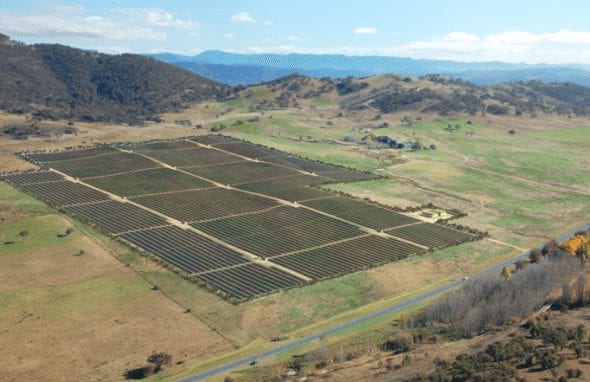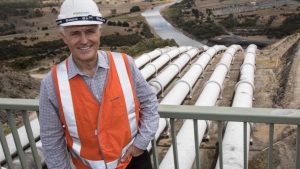Spanish renewables firm Fotowatio Renewable Ventures (FRV) is to build a 20MW solar PV farm near Canberra after winning the ground breaking reverse auction held by the ACT Government – the first in Australia. It’s a result that should cause people to reassess the price of solar PV and which could likely pave the way for a significant solar industry in the country.
The 20MW solar PV farm at Royalla, 23kms south of the Canberra CBD, will be the largest in Australia when it is completed in 2014 – twice the size of the 10MW plant currently being built by First Solar near Geraldton. And it will also set a new benchmark for prices.
FRV won the auction with a bid of $186/MWh, edging out nine other proposals from five competing consortia. Solar insiders say that because the ACT government chose to award a flat tariff over 20 years (such contracts are usually indexed), the effective rate for the purchase agreement is around $150/MWh in year one – assuming a 3 per cent price escalator.
The cost to the ACT government could have been reduced because it will take possession of the renewable energy certificates produced from the project – which are currently worth around $45/MWh, although the ACT has decided to retain the certificates to further offset its emissions, and to ensure that the emissions abatement is additional to national caps.
The ACT government will pay the difference between the wholesale cost and the agreed tariff with FRV. It expects this to fall over time as wholesale electricity costs rise. It says this will amount to 25c/week, or $13 a year, for each household for this project. It expects this cost to fall to $9.50 a year by 2020 as the gap between wholesale prices and the fixed contract narrows.
The tender was the first to be held by the ACT Government as part of its “Big Solar” plan to initially allocate 40MW of capacity to solar projects, and then lift this to a total of 210MW, including other technologies, by 2016. A second tender of 20MW of solar will occur early next year.
The ACT Government has argued that such reverse auctions – which rewards tenderers for bidding the lowest price – are the most effective means of rolling out new technologies, and at the most effective price. They have been used widely in the US, China, India, South Africa, and in South America.
“The quality and price of FRV’s winning bid shows how successful this auction process can be in delivering renewable energy investment,” ACT Energy Minister Simon Corbell said.
Indeed, the result of this auction compares favourably with those in South Africa, which elicited an average price of $199/MWh in its latest round of auctions in May. It is also at the bottom end of the recent assessment of solar PV technology costs released by the Bureau of Resource and Energy Economics. That assessment suggested that solar PV would offer the cheapest form of new-build energy in Australia by the end of the decade. If the experience in South Africa and other countries repeats itself here, then the results of the next tender might be even lower.
An artist’s impression of the Royalla solar farm.
The auction win is also a coup for FRV, which was a key member of the Moree Solar consortium that won the Solar Flagships tender but could not make financial closure on the 150MW solar farm. That bid was eventually lost to a consortium comprising AGL Energy and First Solar, which will build a 159MW acility spread between Broken Hill and Nyngan – although construction will not start till 2014 and will not be complete before late 2015.
But FRV appears to have gotten some revenge, because among the final shortlist was a proposal by the local utility, Actew AGL, which is jointly owned by the ACT Government and AGL Energy, and which was heavily favoured to win. The solar industry will be heartened by the ability of an independent developer to compete against an incumbent utility.
FRV says it has participated in the development of 1.5 gigawatts of solar energy across the globe, and has completed more than 360MW of solar PV and solar thermal plants. “We believe that this program will make a strong contribution to accelerating Australia’s transition to a lower carbon emitting economy,” country manager Andrea Fontana said in a statement. It did not release the name of the supplier of the modules.








